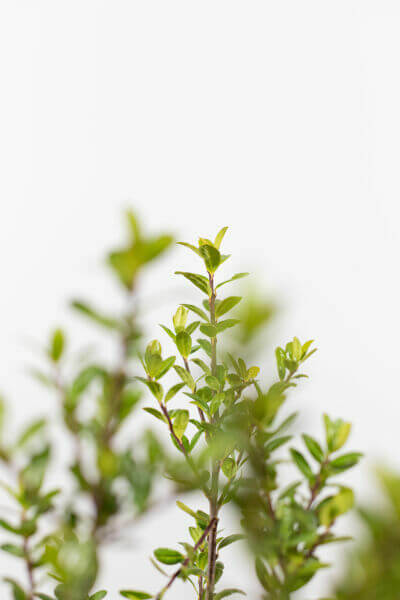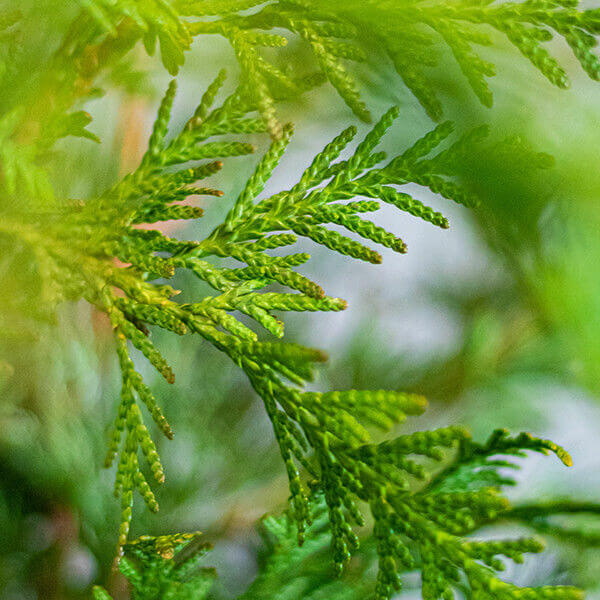Hedge Plants For Year-round Privacy
Improve your garden's appeal with rich hedge varieties such as Yew (Taxus), Thuja, Laurel, Photinia, and Bamboo, commemorated for their structural integrity and ecological advantages.
Yew and Thuja offer evergreen protection and winter durability, while Laurel uses rapid growth and broad, aromatic leaves.
Photinia adds seasonal appeal with its lively red foliage, and Bamboo lends a low-maintenance, peaceful atmosphere.
These hedges improve air quality, decrease sound, and create tranquil, private areas.
Correct planting, spacing, and maintenance guarantee energetic development and ecological harmony.
Check out how these lavish ranges can elevate your garden's charm and well-being.
Secret Takeaways
Change Your Garden With Lush Hedge Varieties
- Select Yew for its dense, evergreen growth and exceptional durability.
- Opt for Laurel for its fast growth and broad leaves, guaranteeing fast personal privacy.
- Pick Photinia for its vibrant seasonal foliage, which turns a striking dark red.
- Utilize Bamboo for a low-maintenance, winter-hardy hedge with aesthetic appeal.
- Space plants 2-3 per meter and prune routinely for optimum development and health.
Popular Hedge Plants
When changing a garden with lavish hedge ranges, it's necessary to consider popular hedge plants such as Yew, Thuja, Laurel, and Photinia due to their unique characteristics and benefits.
Yew (Taxus) is highly esteemed for its longevity and dense, green growth, making it a prime choice for sustaining landscapes.
Thuja is kept in mind for its evergreen foliage and robust winter season resilience.
Photinia adds seasonal vibrancy with red leaves that darken in time, creating dynamic visual appeal.
Laurel offers quick development and aromatic, broad leaves, suitable for quick privacy.
In Addition, Bamboo is an excellent option for atmosphere, using a low-maintenance, winter-hardy choice that improves the garden's aesthetic with its elegant, swaying walking canes.
These choices accommodate a range of horticultural needs and preferences.
Benefits of Garden Hedges
Garden hedges use a multitude of benefits, making them a valuable addition to any landscape. These natural barriers are affordable to execute and offer considerable wind security, enhancing air flow and contributing to noise decrease. The dense foliage of hedges like Thuja and Beech ensures personal privacy by obstructing presence, producing a peaceful and remote environment.
Hedges likewise play an important role in microclimate guideline, providing a steady environment that promotes plant development and reduces temperature level changes. Their intricate leaf structures filter contaminants, improving air quality and adding to a healthier garden community.
Moreover, hedges stand out in sound decrease, taking in and deflecting acoustic waves to lower ambient sound levels. This dual functionality of providing both visual and acoustic personal privacy boosts the overall harmony and aesthetic appeal of any garden.
Planting and Upkeep Tips
For a successful hedge, careful preparation of the planting area is vital. Ensure the soil has appropriate pH and drainage to support strong root advancement.
Space the plants appropriately for the selected types. Water the hedge frequently during its initial growth stage, changing as required with seasonal changes.
Implement a methodical bug control and illness prevention strategy, using chemical or organic treatments when required. Frequently examine for aphids, termites, and fungal infections.
Apply mulch to retain moisture and suppress weeds. Seasonal pruning promotes dense growth and air flow, vital for plant health.
Following these standards will help you cultivate a dynamic, properly maintained hedge that boosts the appeal of your garden.
Spacing and Cutting Guidelines
Spacing and Trimming Guidelines
Appropriate spacing and trimming are important for cultivating healthy, visually appealing hedges. Adequate spacing ensures each plant gets enough nutrients, light, and air flow.
Follow these standards for ideal hedge upkeep:
- Spacing: Position hedge plants 2-3 plants per meter to encourage robust growth.
- Pruning Strategies: Regular pruning is vital for preserving preferred hedge height and shape. Cut brand-new development in summertime and cut back older wood throughout winter.
- Seasonal Care: Adjust trimming techniques and schedules according to seasonal requirements to ensure plant health.
- Hedge Height: Frequently monitor and cut to preserve the wanted hedge height and accomplish consistent looks.
Adhering to these steps will guarantee your hedge flourishes, improving both the appeal and functionality of your garden.
Picking the Right Hedge
Choosing the Right Hedge
Choosing the proper hedge involves examining aspects such as mature height, foliage density, and ecological resilience. Successful hedge plant choice needs comprehending each types' growth qualities and site-specific flexibility.
For example, Yew (Taxus) provides exceptional longevity and thick development, while Thuja is notable for its winter website season resilience. Additionally, considering maintenance requirements is important; fast-growing types like Laurel or Privet need regular cutting, whereas low-maintenance alternatives like Bamboo or Ivy may be preferable for those seeking minimal upkeep.
Environmental factors such as soil type, light accessibility, and moisture conditions must likewise assist the choice procedure. This mindful technique makes sure the picked hedges will grow, supplying both aesthetic and practical advantages to the garden landscape.
Shipment and Planting Suggestions
To ensure your hedge plants flourish, they must be provided by specialized carriers and planted immediately upon arrival.
Follow these vital actions for successful planting:
- Soil Preparation: Enrich the soil with raw material to enhance drain and nutrient content.
- Planting Depth: Create a trench two times the width and equivalent to the depth of the root ball.
- Watering Techniques: Water completely after planting, keeping the soil consistently moist however not filled.
- Mulching: Apply a layer of mulch to retain wetness and suppress weeds.
Customer Assistance and Service
Provided the essential role of prompt assistance in horticultural pursuits, our consumer support group is offered six days a week through telephone, e-mail, and social networks to offer skilled guidance and swiftly attend to any concerns. Their devotion to quick reaction times guarantees customer fulfillment by dealing with questions associated with plant health, optimum planting methods, and maintenance schedules.

Within 24 hr
This comprehensive support group, strengthened by a stellar 9.3/ 10 consumer score, highlights our commitment to boosting the gardening experience for each customer.
Often Asked Concerns
The Length Of Time Does It Consider Hedge Plants to Establish?
Hedge plants normally require one to 3 years to become completely developed, with the precise period varying by types and growing conditions.
Effective care throughout this critical period is essential for robust development. Constant watering, watchful weed control, and proper fertilizer application are pivotal in promoting strong root advancement.
For instance, fast-growing species like Laurel may develop more quickly, while slower-growing varieties such as Yew may take longer. Thorough maintenance accelerates the facility process, resulting in thick and healthy hedges.
What Are the Best Hedge Plants for Personal Privacy?
The concern of the best hedge plants for personal privacy includes examining evergreen and deciduous options.
Evergreen hedges like Thuja, Laurel, and Cypress offer year-round protection, making sure continuous privacy.
In contrast, deciduous hedges such as Beech use seasonal personal privacy, shedding leaves in colder months.
Key maintenance suggestions for privacy hedges include regular trimming, fertilizing in spring, and appropriate spacing-- usually 2 to 3 plants per meter.
In addition, constant watering and thorough weed elimination are important for promoting healthy, thick development.
Can Hedge Plants Bring In Wildlife to My Garden?
Yes, hedge plants can bring in wildlife to your garden by supplying necessary advantages like shelter, food, and nesting websites, therefore boosting regional biodiversity. Yew, holly, and laurel are exceptional for drawing in birds, while ivy supports a range of pests.
Nevertheless, it's crucial to keep in mind that there are some disadvantages, such as increased maintenance to handle bugs and regular upkeep. Thoroughly choosing and maintaining hedge ranges can assist balance these benefits and downsides, eventually promoting a vibrant and sustainable community in your garden.
Are There Any Blooming Hedge Plants Available?
Yes, there are flowering hedge plants offered that can enhance the charm of your garden.
For example, Elaeagnus, likewise called Olive Willow, produces aromatic white flowers in the fall, adding a touch of elegance.
Photinia, another popular option, showcases vibrant red leaves that develop into a rich green, producing a dynamic visual impact throughout the seasons.
To make sure these plants flourish, it's vital to practice appropriate pruning strategies and seasonal maintenance, such as cutting brand-new growth in the summer season and cutting back in the winter season.
These procedures will help preserve the health and visual appeal of your flowering hedges.
How Do I Avoid Bugs in My Hedge Plants?
To prevent insects in hedge plants, use natural pest control techniques and maintain appropriate hedge care. Present beneficial insects like ladybugs, which take advantage of damaging pests, to create a well balanced environment.
Frequently inspect your hedges for signs of invasion and promptly remove any affected parts to prevent the spread. Guarantee the health of your hedges by using well balanced fertilizers and supplying adequate water.
Utilize mulching to retain soil moisture and proper spacing to decrease plant stress and promote robust development. These practices collectively help in lessening insect issues and preserving a healthy hedge.
Conclusion
In essence, selecting the best hedge varieties such as Yew, Thuja, and Laurel can transform any garden into a peaceful haven. These plants provide year-round greenery, boost visual appeal, and offer practical benefits like sound decrease and wind security.
Appropriate planting methods, accurate spacing, constant watering, and seasonal cutting are crucial for ideal growth.
Reputable delivery services and expert consumer assistance ensure a seamless experience from purchase to planting, making it simpler than ever to raise your outside space.
Garden hedges provide a plethora of advantages, making them a valuable addition to any landscape. These natural barriers are affordable to carry out and offer significant wind defense, improving air circulation and contributing to sound reduction. The thick foliage of hedges like Thuja and Beech ensures personal privacy by obstructing presence, producing a serene and remote environment.

Pruning Techniques: Regular pruning is essential for maintaining wanted hedge height and shape. Cut new growth in summer and cut back older wood throughout winter season.